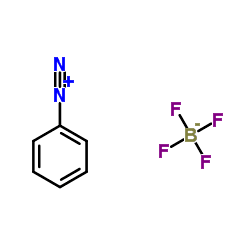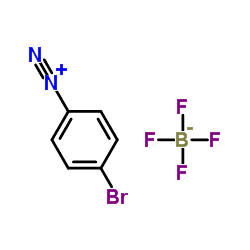 | ||
Tetrafluoroborate ion bf4 lewis dot structure
Tetrafluoroborate is the anion BF4−. This tetrahedral species is isoelectronic with tetrafluoromethane, CF4 and tetrafluoroammonium NF4+, and is valence isoelectronic with many stable and important species including the closely related anion perchlorate, ClO4−. It arises by the reaction of fluoride salts with the Lewis acid BF3, treatment of tetrafluoroboric acid with base, or by treatment of boric acid with hydrofluoric acid.
Contents
- Tetrafluoroborate ion bf4 lewis dot structure
- Tetrafluoroborate meaning
- As an anion in inorganic and organic chemistry
- Examples of salts
- References
Tetrafluoroborate meaning
As an anion in inorganic and organic chemistry

The popularization of BF4− has led to decreased use of ClO4− in the laboratory. With organic compounds, especially amine derivatives, ClO4− forms potentially explosive derivatives. One disadvantage to BF4− is its slight sensitivity to hydrolysis, whereas ClO4− does not suffer from this problem. Safety considerations, however, overshadow this inconvenience.

The utility of BF4− arises because its salts are often more soluble in organic solvents than the related nitrate or halide salts. Furthermore, BF4− is less nucleophilic and basic than nitrates and halides. Thus, when using salts of BF4−, one can usually assume that the cation is the reactive agent and this tetrahedral anion is inert. BF4− owes its inertness to two factors: (i) it is symmetrical so that the negative charge is distributed equally over several (four) atoms, and (ii) it is composed of highly electronegative fluorine atoms, which diminish the basicity of the anion. Related to BF4− is hexafluorophosphate, PF6−, which is even more stable toward hydrolysis and whose salts tend to be more lipophilic.

Illustrative of a fluoroborate salt is [Ni(CH3CH2OH)6](BF4)2, a kinetically labile octahedral complex, which is used as a source of Ni2+.

Extremely reactive cations such as those derived from Ti, Zr, Hf, and Si do in fact abstract fluoride from BF4−, so in such cases BF4− is not an "innocent" anion and less coordinating anions must be employed.
Transition and heavy metal fluoroborates are produced in the same manner as other fluoroborate salts; the respective metal salts are added to reacted boric and hydrofluoric acids. Tin, lead, copper, and nickel fluoroborates are prepared through electrolysis of these metals in a solution containing HBF4.
Examples of salts
Potassium fluoroborate is obtained by treating potassium carbonate with boric acid and hydrofluoric acid.
Fluoroborates of alkali metals and ammonium ions crystallize as water-soluble hydrates with the exception of potassium, rubidium, and caesium.
Fluoroborate salts are often associated with highly reactive compounds. Some examples include
